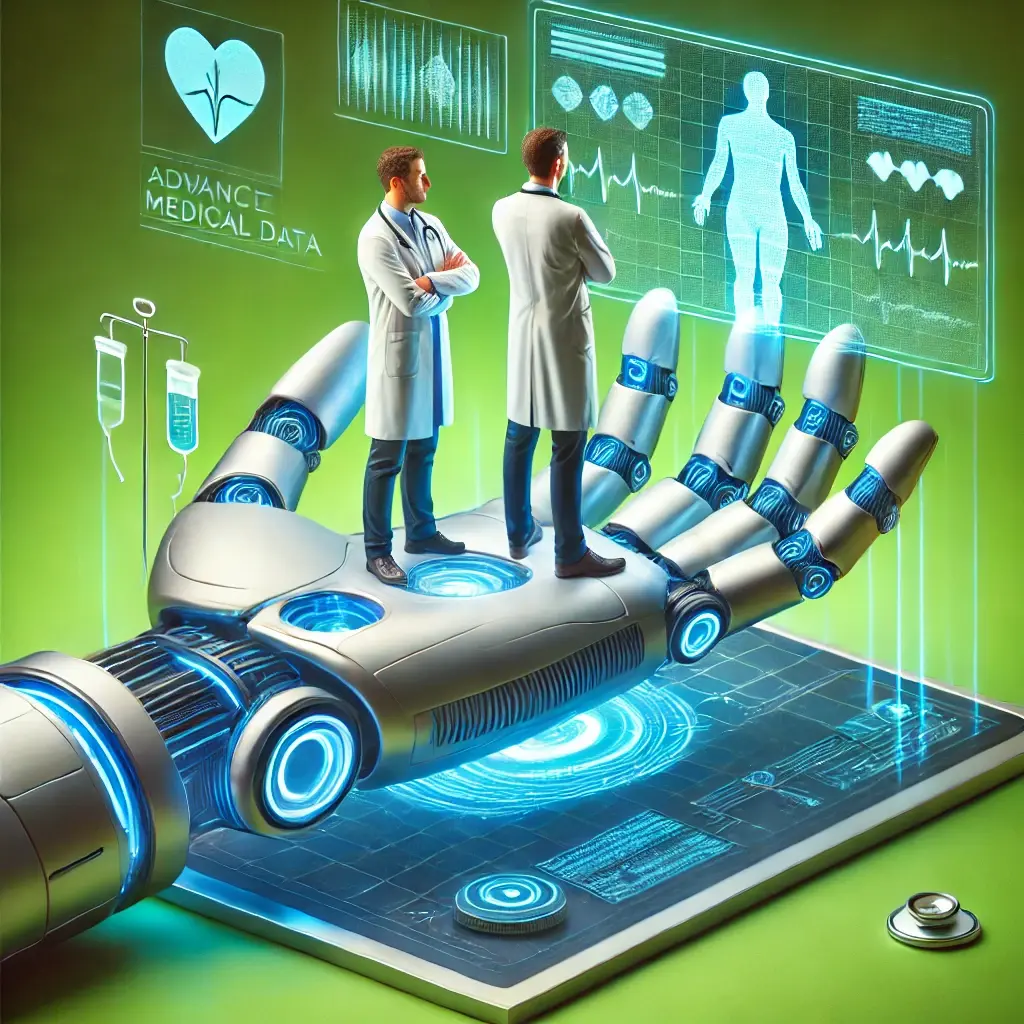AI Enhancements in Medical Education: New Features from Med-Challenger

At Challenger, we're using our extensive history in medical AI to make informed decisions about its applicability in education. Our goal is to enhance the learning experience for residents and clinicians using our resources for study and professional development.
Today, we are introducing a wide variety of clinical learning support materials directly into our courses, making them easily accessible to learners. These resources are designed to supplement and enrich the core content, making the learning process smoother and more enriching.
Adapting to AI Advancements
As AI models have become more capable and stable, we've adapted our approach to learning materials. We're utilizing these advancements to create more dynamic, interactive, and relevant content for medical professionals.
While we recognize the potential of AI in medical education; we're also mindful of its limitations and ethical implications. We've detailed our approach to AI integration, including potential cautions, in our comprehensive pillar page:
Use of AI in Medical Education, Medical Diagnostics, Clinical Support - and Challenger

Accessing AI-Enhanced Content
These AI-supported enhancements are available under the "Supplemental Information" button in selected courses. This feature provides access to additional resources related to the topic you are in, and carefully structured to support your learning. Supplemental learning material is being added first to the (very) large blueprint-based initial certification and MOC study guides.
In courses where it is applicable, you will see under the Supplemental Information button, for each disease or condition,15 pieces of structured information:
Challenger Features - AI Content Enhancements
- Case Study Analysis: AI-generated case studies based on the condition being studied, walking a student through presentation, differential diagnosis, and findings.
- Comorbidities: Providing insights into how different medical conditions can coexist and affect each other.
- Common Misdiagnoses: Highlighting frequent diagnostic errors in various medical fields to enhance diagnostic accuracy.
- Confounding Signs and Symptoms: Offering detailed explanations about symptoms that might be misleading or indicative of multiple conditions.
- Pathophysiology Diagrams and Outline: Full diagram, in detail, of pathophysiology of a condition or state.
- Interactive Timeline: Timeline that shows normal progression of a disease, including key stages, typical timelines for symptom development, and critical points for intervention.
- Diagnostic Criteria Checklist: Offer checklists or decision trees for diagnostic criteria, helping learners to systematically approach a diagnosis based on the symptoms presented.
- Treatment Pathways and Protocols: Detailed guides on standardized treatment protocols for various conditions, including step-by-step management plans.
- Epidemiology: Historical trends, changes in incidence and prevalence, geographic variations, noticeable differences in treatment outside the US
- Comparison Tables: Create tables that compare and contrast similar diseases or conditions, highlighting key differences in symptoms, causes, and treatments. This can aid in understanding differential diagnoses.
- Medication and Treatment Updates: Latest information in pharmacotherapy or other therapy related to the disease condition in the last year.
- Global Health Perspectives: Offer insights into how the condition is approached, treated, and managed in different parts of the world, including challenges and strategies unique to various health care systems.
- Ethical Considerations and Scenarios: Present various ethical dilemmas or scenarios related to the medical field, particularly in relation to the condition being studied. This can prompt learners to consider the moral and ethical aspects of medical practice.
- Pharmacology Deep Dives: In-depth explorations of drug mechanisms of action, pharmacokinetics, and pharmacodynamics, especially for complex or newly approved medications.
- Technology and Innovation in Medicine: Updates on the latest technological advancements in medicine, like telemedicine, AI in healthcare, wearable health devices, and their clinical applications.
These 15 AI content enhancements are crafted to seamlessly integrate into your learning process, offering a more interactive and informative educational experience. This is just the beginning of how LLMs can improve medical education.
The supplemental information details simple medical conditions, timelines, pathophysiology, common comorbidities, common misdiagnoses and other related areas. While no disease walks into the doctor’s office by itself — they always show up with other conditions — a deeper understanding of individual conditions, stages, and sequelae is important for developing the mental framework for differential diagnosis.
We have a free sample course called Med-Challenger Preview: Infectious Disease with LLM if you don’t own a course but would like to look at how the supplementary material works. Course trials also contain AI calls where ever applicable.
To explore the broader impact of AI on learning, including its challenges and opportunities, visit Use of AI in Medical Education, Medical Diagnostics, Clinical Support - and Challenger. The cautions of dealing with AI models in clinical work (and everywhere else) are discussed in more detail on that page.
For personal medical education that includes board's prep, MOC, and CME requirements, Med-Challenger has you covered in Family Medicine, Emergency Medicine, Internal Medicine, Pediatrics, Pediatric Emergency Medicine, OBGYN, Physician Assistants, and Nurse Practitioners.




